Which heating pump is best? Circulation pumps for heating systems: specifications and selection
For an autonomous heating system to be effective, one boiler is not enough. The coolant must constantly circulate through pipes and radiators, giving them its energy. And the pump connected to the water circuit is responsible for its incessant movement. Without it, it is impossible to achieve high-quality space heating either in a private house or in an apartment.
Circulation pumps for heating - this is a compact rotary-type electrical equipment, where the coolant is set in motion by the rotating blades of the unit. They are included in an autonomous system in front of the boiler itself and operate from a regular household network.
With the correct installation of the heating circuit, the water in it, of course, can circulate in a natural way, obeying the elementary laws of physics. But the transfer of thermal energy in this case will be slower, and its distribution will be uneven. It is best to warm up the rooms that are closer to the heating boiler. Slightly warm water will come to the farthest, which will no longer be able to work normally in the radiator.
To increase efficiency, quickly and evenly heat the entire area of \u200b\u200ba private house for the water circuit, you need to choose a suitable circulation pump. Usually it is mounted on a "cold" branch of the return heating flow. Here, the unit creates a vacuum in the system, sucking in the cooled coolant and forcibly driving it into the boiler. Streams of water from radiators rush to the vacant place, and those, in turn, are immediately filled with boiling water.
A pump designed for heating allows you to solve several technical issues at once:
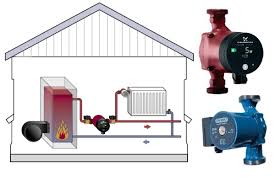
- There is no need to lay the pipeline strings at a slope.
- It becomes possible to choose a smaller pipe diameter.
- The risk of air pockets preventing the circulation of the coolant is reduced.
- The temperature at the “cold” inlet of the heating boiler and at the outlet has a small gap, which makes it possible to reduce energy consumption and increase the resource of the heater itself.
- The constant speed of water movement in the heating system is maintained.
We decided on the need to use such a useful unit. Now it remains to figure out how to choose a circulation pump that will work for a long time and efficiently. We offer a selection guide for this equipment and a brief overview of the most popular models.
Main types
There are two types of circulation heating pumps: with dry and wet rotor.
1. "Dry".
Sufficiently powerful units with high performance (efficiency = 80-85%), which perfectly cope with the load in branched heating systems of private houses. If you need to heat large areas, it is better to choose this type, despite the cost. Here, all working units are isolated from water by sealing rings, so they do not experience corrosive effects. The motor is cooled by a special fan on the case. But this design has its drawbacks: rotating parts often need to be relubricated, without which they wear out quickly. In addition, dry pumps are very demanding on water quality. Various suspensions can significantly reduce the life of mechanical seals.
A big plus is the ability to replace the engine if the heating system of a private house needs to be modernized. In this case, it is easy to choose and install a more powerful drive so that it can cope with increased loads. According to the principle of connecting the engine, an additional division of dry pumps into two subspecies is accepted:
- Coupling.
- Flanged.
According to the location of the inlet pipe, vertical, horizontal and monoblock models are also distinguished.
A "dry" circulation pump is a very noisy unit. Therefore, it is better to take it to a separate room, as far as possible from the living rooms. The installation of an additional soundproofing system for the walls will not interfere either.
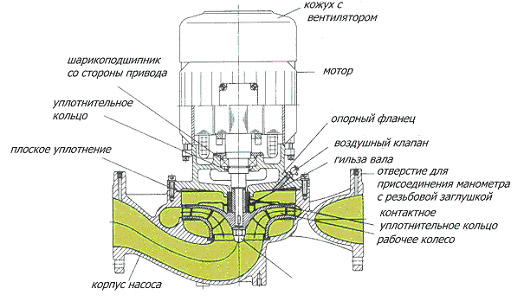
2. With a wet rotor.
The simplest in design circulation pump for heating. Its working blades and rotor are in constant contact with the coolant, that is, they act directly on it. At the same time, passing water acts as a kind of lubricant for the rotating elements of the mechanism, and also takes away excess thermal energy, preventing overheating of the nodes.
The wet rotor circulation pump works almost silently in the heating circuit, since all sounds are absorbed and extinguished by water. But its advantages over a dry "colleague" are not limited to this. The indisputable advantages are:
- Compact and light weight.
- Long trouble-free operation.
- Easy to maintain and, if necessary, to repair.
Less power consumption should not be included in this list, since the power delivered by a wet rotor will also be lower than that of a dry one. The reason for this is the weak efficiency indicators (about 50%). And the speed of the pump in the heating system will not allow it to be used on long lines. Its limit is a city apartment or private house simple layout.
A clear disadvantage of wet rotor units is their exactingness in terms of the quality of the coolant. The resource of such equipment is very large, but the worse the water in the heating system is, the sooner it will run out. And if in the case of a dry type of replacement, only a rubber seal is required, the wet one will have to be thrown away and a new one bought.
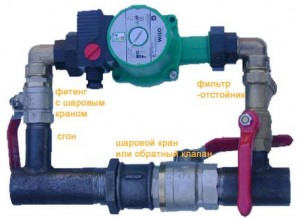

Popular wet rotor models:
- Star-RS - provides the ability to adjust the speed of the impeller, that is, in fact, control the performance.
- Star STG - differs from the previous model in higher thermal endurance. It can work for about two hours when the carrier temperature rises to +120 ºС. But the normal heating conditions for it remain standard for this series +110 ºС.
- Wilo Top S - connects to a single or three-phase network. Working temperature in the system - +130 ºС. In addition, it has an additional auto-off function if the heating stops working for some reason (for example, the boiler goes out).
- The Grundfos UPS series are well-established Germans, who complain in the reviews only about the high price. Otherwise, the owners unanimously call these pumps indestructible. And even in conditions that are far from ideal.
- Gileks Compasses - almost half the price of analogues from Grundfos, but they work out their resource honestly.
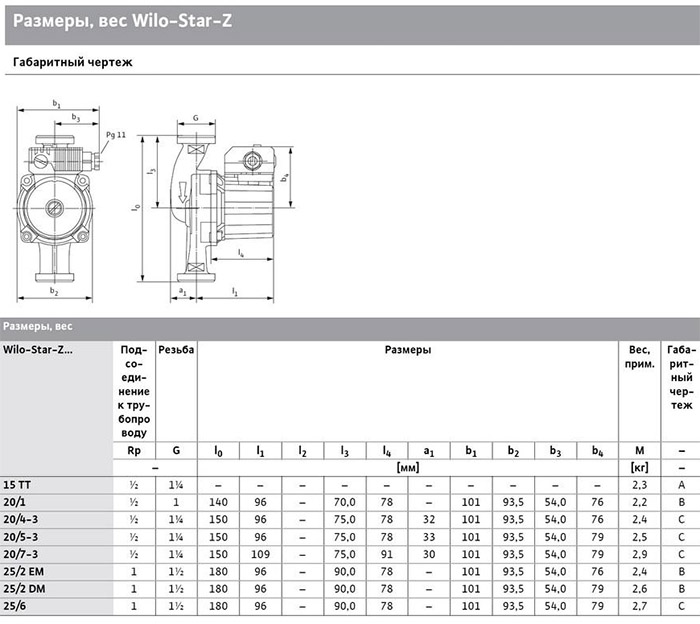
What to consider when buying?
If you are familiar with all the features of the pumps, then the basic principle of how to choose the right unit has already been understood:
1. When the heating system has a small length, the wet rotor option is enough. You will only need to install it in full accordance with the manufacturer's instructions and take care of the purity of the water in the circuit.
2. For two-level or simply very large apartments, as well as in a private house, it is better to choose a pump with a dry rotor for heating. It will require frequent maintenance, but it will provide heat even to the most remote rooms.
Before choosing a pump for heating, you will need to perform a complex hydraulic and thermal calculation of the future system. You are unlikely to be able to do this on your own, and you don’t need to - you will find all the necessary data in the heating project drawn up by specialists.
To choose the right specifications unit, you will need the following information:
- The required coolant supply (m3 / h) is an indicator by which the pump performance should be oriented. Moreover, it is important to calculate it as accurately as possible. Lack of volume flow will reduce the efficiency of heating, excess will increase the load on pipes and increase energy consumption.
- Pressure - it is better to choose in such a way that the mechanism can overcome the hydraulic resistance in the line. Actually, this is his main job.
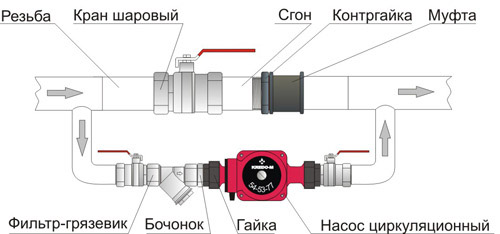
Unlike other types of electrical equipment, the actual power characteristics of the pump should be 5-10% lower than the maximum design values. The stock here will only hurt. Do not be afraid of overload - there are simply no such conditions in a separate heating circuit. But running idle or with excess pump power will lead to uncomfortable noise in the pipes and a constant waste of electricity. Not to mention the fact that a more powerful device initially has a high cost.
If in the near future the heating system will be redone, it is better to immediately buy a pump with the ability to adjust the power. In this case, you can use one unit before and after the reconstruction of the heating, simply by reconfiguring it in accordance with the new conditions.
Today you can choose a circulation pump with an anti-blocking function. When the heating is turned off, it will start daily for a short time, driving the stagnant coolant through the pipes. Thanks to this, the operability of all elements of the system is maintained.
Price
| Rotor type | Model | Power | Head, m | Supply, m3/h | Price, rubles |
| Wet | Wilo Star-RS 25/6 | 99 | 6 | 3,5 | 4000 |
| Grundfos UP 20-15 N | 65 | 1,5 | 1,75 | 7000 | |
| Grundfos UPS 32-100 F 220 | 280 | 10 | 13,7 | 29500 | |
| Gilex 25/40 | 65 | 4 | 3 | 3600 | |
| Gileks 32/80 | 135 | 8 | 8 | 6700 | |
| Dry | DAB KLP 50/1200M | 750 | 11 | 28 | 40490 |
| Wilo-BAC 40/125 | 750 | 18 | 24 | 29660 | |
| VeroLine-IP-Z 25/2 | 60 | 4,8 | 5,4 | 28740 |
For one-story houses and shops, cottages and apartments, the heating system is calculated taking into account the natural circulation of the coolant. As for buildings, especially multi-storey buildings with large heating areas, this method will either not work or will not be effective enough. So you need to provide forced circulation. Therefore, in heating networks of various capacities and structures, circulation pumps are used for heating systems, technical characteristics, which can differ significantly.
 For any configuration and power of the heating system, you can choose a circulation pump. The main task that the circulation pump must perform is to increase the speed of the coolant in the system and raise the pressure so that the coolant can rise to the upper floors and give off heat.
For any configuration and power of the heating system, you can choose a circulation pump. The main task that the circulation pump must perform is to increase the speed of the coolant in the system and raise the pressure so that the coolant can rise to the upper floors and give off heat.
In heating systems with a large length and with high hydraulic resistance, the efficiency of the system cannot be ensured without a circulation pump.
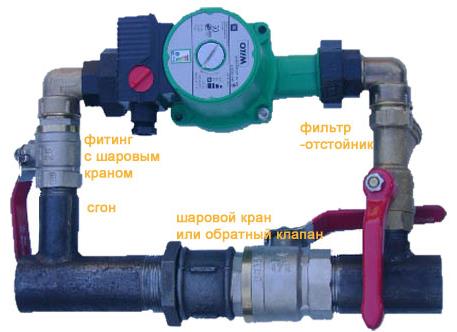
The hydraulic resistance of the system depends on:
- from the material of the highway;
- on the diameter of the pipes and the length of the system;
- on the number of radiators and the method of their connection;
- on the presence and type of valves;
- on the number of fittings.
The design of the circulation pump
Circulation pumps are highly specialized equipment designed to ensure the forced movement of fluid in a closed heating system.
 The design of the pump is quite simple:
The design of the pump is quite simple:
- case (stainless metals and alloys are usually used);
- rotor (ceramic or stainless steel);
- rotor shaft with impeller;
- electric motor.
The circulation pump, included in a closed heating system, sucks in the coolant, accelerates its movement and creates pressure (pressure) at the outlet. This pressure overcomes hydraulic resistance in problem areas of heating. You can read more about the operation of a heat pump.
Calculation of the circulation pump
 A simple calculation of a circulation pump for a home heating system is given below. First of all, it is necessary to calculate its performance. The unit of measurement is kg/h. This means that the volume of coolant that passes through the system to the heating radiators per hour and, consequently, the amount of heat transferred from the boiler to the batteries directly depends on the performance. To the question - how to calculate a circulation pump for heating a house, the applied formula V \u003d (SxQ) / (Cx (T1 - T2), where:
A simple calculation of a circulation pump for a home heating system is given below. First of all, it is necessary to calculate its performance. The unit of measurement is kg/h. This means that the volume of coolant that passes through the system to the heating radiators per hour and, consequently, the amount of heat transferred from the boiler to the batteries directly depends on the performance. To the question - how to calculate a circulation pump for heating a house, the applied formula V \u003d (SxQ) / (Cx (T1 - T2), where:

T1 and T2 are outlet/inlet temperatures. The standard is 20 degrees, and if a floor heating system is organized, then this value is 5-10 degrees Celsius.
According to the standards for an individual house, the Q value is 100 W/sq. Meter.
 According to the above formula, the result is obtained in kg / h, and since pump manufacturers use values in m3 / h, it is not difficult to recalculate, you need to divide the result by the density of the coolant. For water, the density at 80 degrees Celsius is 971.8 kg/m. cube
According to the above formula, the result is obtained in kg / h, and since pump manufacturers use values in m3 / h, it is not difficult to recalculate, you need to divide the result by the density of the coolant. For water, the density at 80 degrees Celsius is 971.8 kg/m. cube
The installed pump for circulating water in the heating system requires the calculation of a very important indicator - pressure. Because at low pressure the system will be inefficient. Calculations begin with measuring the length of pipes, their diameter, and the number and type of reinforcement are calculated.
The formula H=(RxL+Z)/pxV was used for the calculation, where:
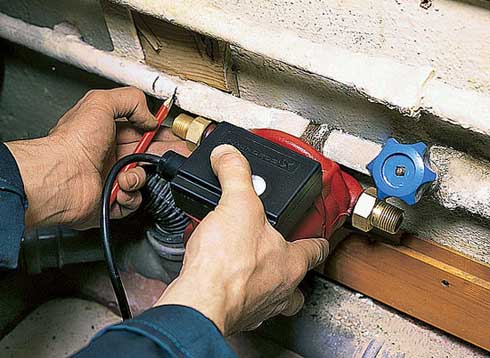
Calculations using the above formulas require a certain skill and knowledge. To help consumers, many programs have appeared that allow you to choose the right pump online. Therefore, the task of how to calculate the circulation pump for a heating system can be easily solved using, for example, the Wilo-Select Online program (online pump selection program).
Features of this useful program: 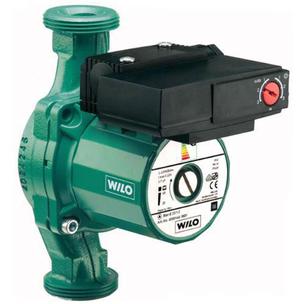
- product data is updated once a day;
- the program determines the hydraulic parameters of systems and pumps;
- the program calculates costs over the entire service life;
- document format - Acrobat PDF.
This program is a great assistant for calculating the parameters of the Wilo circulation pump.
Popular heating circulation pump Wilo
The German circulation pump for heating Wilo, the technical characteristics of which are given below, has two modifications, with a dry or wet rotor. All pumps with a "wet" rotor are usually low-power and are designed for use in heating systems up to 200 square meters. m. A circulation pump with a dry rotor is much more powerful and is used for complex systems.
The main indicators of the pumps "Wilo":
- head - 8 meters (maximum height of the coolant);
- pressure in the system - 5 cubic meters / hour;
- required power (house area 130 sq. m) - 0.4 cubic meters. m/hour;
- required power (house area 170 sq. m) - 0.6 cubic meters. m/hour;
- with heating 300 sq. m need power - 0.9 cubic meters. m/hour.
The principle of selection is clear, but it is best to get advice from a professional or an online store manager.
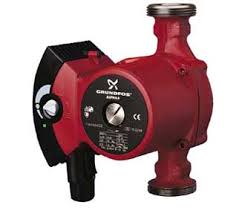 A Danish company produces a Grundfos circulation pump for space heating. Grundfos pumps are available with dry and wet rotors. The main difference between the pumps of this company is specialized series for use in a specific area. All Danish pumps are economical, quiet and easy to install. A detailed technical description is attached to the pump. Therefore, if it becomes necessary to choose a circulation pump for heating, then you must definitely pay attention to Grundfos products.
A Danish company produces a Grundfos circulation pump for space heating. Grundfos pumps are available with dry and wet rotors. The main difference between the pumps of this company is specialized series for use in a specific area. All Danish pumps are economical, quiet and easy to install. A detailed technical description is attached to the pump. Therefore, if it becomes necessary to choose a circulation pump for heating, then you must definitely pay attention to Grundfos products.
 If the system operates with forced circulation, then a power outage is fraught with stopping the operation of the boiler and stopping the heating of the home. For such areas, with an unstable supply of electricity, a circulation pump for heating has been created. 12 volts of power is provided by the battery. The principle of operation is the same as for other pumps. As an example, a circulation pump for heating Dab 25 6 from Dab with a 12 V supply, a heated area up to 200 sq / m.
If the system operates with forced circulation, then a power outage is fraught with stopping the operation of the boiler and stopping the heating of the home. For such areas, with an unstable supply of electricity, a circulation pump for heating has been created. 12 volts of power is provided by the battery. The principle of operation is the same as for other pumps. As an example, a circulation pump for heating Dab 25 6 from Dab with a 12 V supply, a heated area up to 200 sq / m.
 Gileks pumps with an operating voltage of 12 volts have proven themselves well. From the line of models of the Sprut company, the circulation pump for heating, the price of the Sprut is quite affordable. This brand is distinguished by a large number of models, with a flow rate of 3 to 4 cubic meters. meters / hour and with a pressure of 6.1 meters. The price is different for each model and is specified by the store manager.
Gileks pumps with an operating voltage of 12 volts have proven themselves well. From the line of models of the Sprut company, the circulation pump for heating, the price of the Sprut is quite affordable. This brand is distinguished by a large number of models, with a flow rate of 3 to 4 cubic meters. meters / hour and with a pressure of 6.1 meters. The price is different for each model and is specified by the store manager.
Purchase of a circulation pump
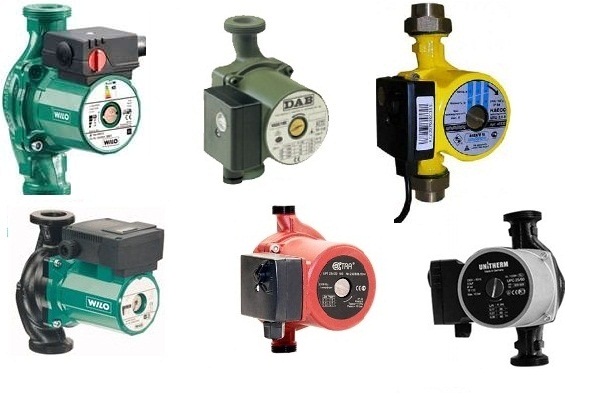 Which circulation pump to buy for a heating system to buy and how to choose it? The heating pump must be bought in specialized stores, but you can place an order in the online store. The pump sales manager will help you choose the right type of pump for performance and price. the technical characteristics of which are suitable for the heating system, it is necessary to check the conformity of the dimensions of the interface with the pipes of the system. If you buy a water pump for heating, then it has a certain manufacturer's warranty.
Which circulation pump to buy for a heating system to buy and how to choose it? The heating pump must be bought in specialized stores, but you can place an order in the online store. The pump sales manager will help you choose the right type of pump for performance and price. the technical characteristics of which are suitable for the heating system, it is necessary to check the conformity of the dimensions of the interface with the pipes of the system. If you buy a water pump for heating, then it has a certain manufacturer's warranty.
Do-it-yourself pump repair
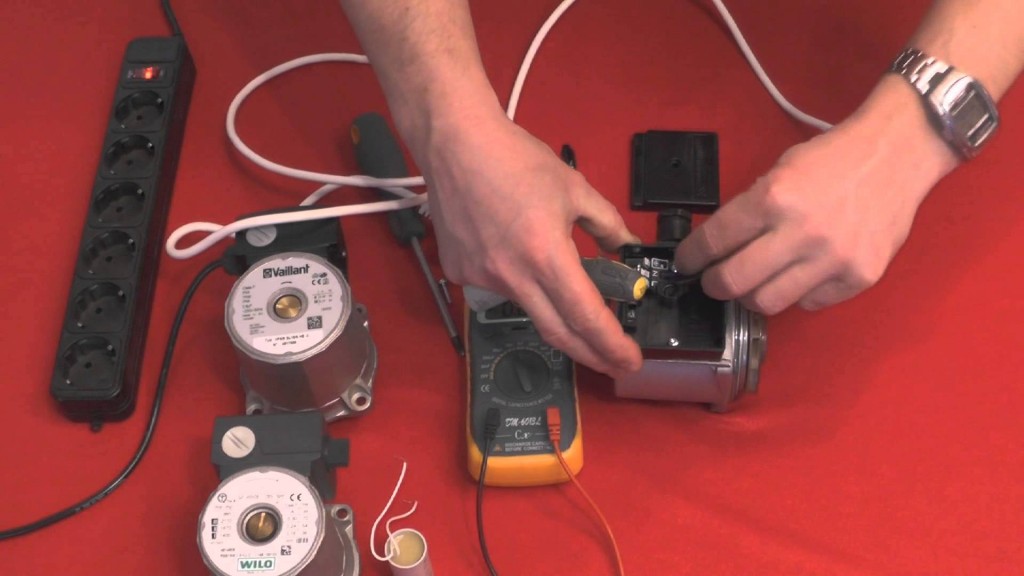 If the circulation pump for heating breaks down, do-it-yourself repairs are not difficult to do. Pumps are designed for a significant service life, they are reliable and durable. But sometimes they break. The device of the pumps is simple, any spare parts are available for sale, so in the event of a device failure, repairs can be easily done by hand.
If the circulation pump for heating breaks down, do-it-yourself repairs are not difficult to do. Pumps are designed for a significant service life, they are reliable and durable. But sometimes they break. The device of the pumps is simple, any spare parts are available for sale, so in the event of a device failure, repairs can be easily done by hand.
The only thing you need to know and strictly follow to avoid pump breakdowns:
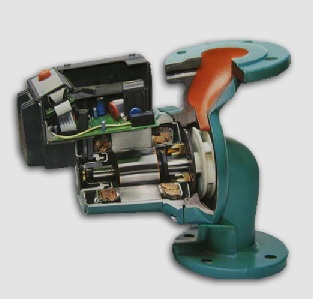
 Typical malfunctions for "wet" and "dry" pumps are somewhat different. For dry ones, the sealing rings are damaged, and the coolant can flood the motor windings, which will cause a short circuit. The maximum service life of O-rings is about 2-3 years, so they need to be replaced earlier, even before a malfunction occurs. "Wet" circulation pumps deteriorate due to starting at zero flow, and in the absence of liquid in the system.
Typical malfunctions for "wet" and "dry" pumps are somewhat different. For dry ones, the sealing rings are damaged, and the coolant can flood the motor windings, which will cause a short circuit. The maximum service life of O-rings is about 2-3 years, so they need to be replaced earlier, even before a malfunction occurs. "Wet" circulation pumps deteriorate due to starting at zero flow, and in the absence of liquid in the system.
Open heating system with circulation pump
What is and how does an open heating system with a circulation pump work for the movement of the coolant? An open system is a heating system that has an open expansion tank. The open system attracts with its low cost and ease of maintenance and installation. It is used in remote cities and gasified villages.
The system is usually created natural circulation, but the use of a pump reduces
warm-up time and save gas.
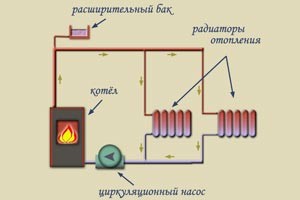 Water in an open expansion tank evaporates, so you need to monitor its level. IN open system circulating pumps for heating, the characteristics of which may differ, are installed not far from the heating boiler in the "return", and in the event of a breakdown or lack of electricity, a bypass (bypass) is made to allow the heating system to work without a pump.
Water in an open expansion tank evaporates, so you need to monitor its level. IN open system circulating pumps for heating, the characteristics of which may differ, are installed not far from the heating boiler in the "return", and in the event of a breakdown or lack of electricity, a bypass (bypass) is made to allow the heating system to work without a pump.
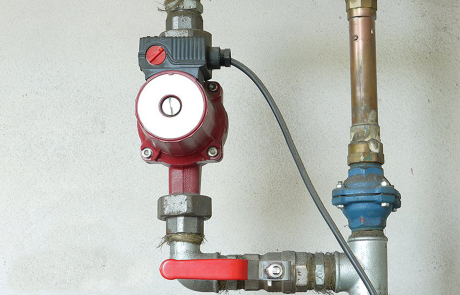 Let's summarize. A different price of a circulation pump for a heating system allows you to choose for any wallet, because the market is filled to capacity. Dozens of companies offer their products. By and large, competition forces manufacturers to make high-quality goods, otherwise it is almost impossible to return a damaged reputation with high competition. This means that the quality of the pumps is almost the same and they need to be selected only by performance, pressure, and supply voltage.
Let's summarize. A different price of a circulation pump for a heating system allows you to choose for any wallet, because the market is filled to capacity. Dozens of companies offer their products. By and large, competition forces manufacturers to make high-quality goods, otherwise it is almost impossible to return a damaged reputation with high competition. This means that the quality of the pumps is almost the same and they need to be selected only by performance, pressure, and supply voltage.
Owners of private houses usually bear the burden of responsibility for the calculation, design and installation of all life support systems for their homes. One of the key roles is played heating equipment, without which, given the known climatic factors, it would have been hard. As a rule, for the purpose of heating small volumes, a system with is used, the unhurried spreading of heat from which around the house can take a long time. One way to increase its effectiveness is to introduce such additional device as a circulation pump for heating.
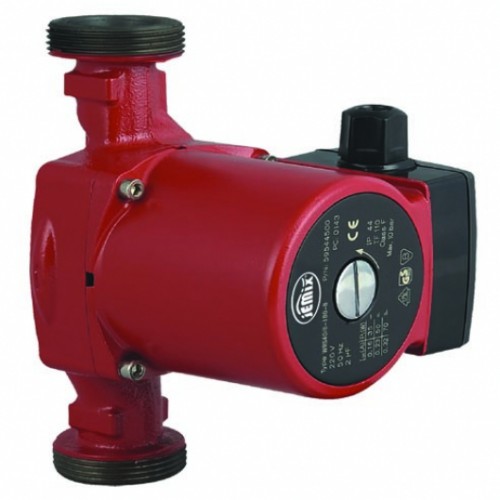
With what benefit such changes are made to the heating scheme of the house? The circulation pump contributes to the forced movement of the coolant along the circuits of the system. Its connection is done with a certain calculation. It is required that:
- The speed of movement of the coolant in the system has increased and, as a result, the speed of obtaining an acceptable air temperature in all rooms has increased. There is no need to wait until the boiler heats up a significant amount of water and starts its slow circulation. Thanks to the installation of the pump for heating, the temperature recovery in the radiators will be felt within 10 minutes;
- The energy carrier was spent efficiently and economically. Due to the less costly initial heating of the coolant and the acceleration of its movement through the system, with the resulting decrease in the difference in supply and return temperatures, the boiler begins to burn gas (fuel oil, coal, firewood, etc.) significantly less than before the installation of the pump. At the same time, the costs of the work of the latter are compensated in excess;
- The formation of "traffic jams" from the air was minimized. The brisk circulation of the coolant caused by the addition of a pump to the circuit will contribute to their removal.
An alternative to connecting this product is to replace the existing pipes with pipes of a larger diameter. But to select and install additionally just a pump is economically a much more acceptable option compared to the recalculation, purchase and replacement of all existing connecting elements.
Types and device
There are two groups of pumps for heating systems:
- Wet.
- Dry.
The first one is different in that the rotor of the electric motor of the product is in a coolant medium (the latter also acts as a lubricant). These are reliable, durable and economical pumps, unpretentious in operation and maintenance (subject to proper installation and location - it must be strictly horizontal).
They work almost silently. The only characteristic that can be called unimportant is the efficiency equal to ~ 0.5. However, for private houses that do not differ in large volumes, this will not seriously affect the efficiency of the system.
The second group is represented by products in which direct contact with the coolant is excluded (sealing rings of a special design protect the electric motor from the working part). This, on the one hand, makes it possible to achieve an efficiency of about 0.8, and on the other hand, makes such devices noisy in operation. Therefore, it is better to install them in the back rooms of houses (without the constant presence of people), and also equip these products with vibration dampers.
Once you have chosen them for your home heating system, be prepared for regular removal and reconnection maintenance as well, as dry insulators tend to wear out fairly quickly and require periodic lubrication and replacement. Such devices have three types of design that determine its location:
- horizontal - with a suction pipe on the front side of the shaft and a discharge pipe on the body;
- vertical - with coaxially placed suction and discharge pipes;
- block - with a suction pipe in the direction of the axis of the electric motor and a radially installed discharge pipe.
Simplified, any pump can be represented as a mechanism of the following parts:
- housing with a heat-insulating casing;
- flow part;
- electric motor;
- rotor with impeller;
- display and control module.
It works like this: as a result of starting the electric motor, a rotor with an impeller rotates, which ensures that water is sucked in from one side of the flow part and ejected from the other. The display and control module, depending on the characteristics of a particular product, allows you to intervene in the process to one degree or another.
Calculations and installation features
In order for the system to work properly, you need to know how to choose a pump for heating. In order to select the most effective device for the scheme of a particular house, a hydraulic calculation should be carried out. It consists in determining two key characteristics: the flow rate of the coolant in the circuit and the pressure required for its good passage.
That is, the calculation comes down to establishing data for the existing system and comparing them with those in the instructions of pump manufacturers (identifying the degree of correlation of pressure-flow graphs). The optimal product will be the one that is closest in characteristics to the calculated values \u200b\u200bof your heating scheme.
IN otherwise it will either quickly fail (due to insufficient power and work with constant overload), or will work with low efficiency (with an unreasonably large margin of power).
To determine the cost, you need to find out:
- consumed thermal power of all circuits;
- supply and return temperatures;
- heat capacity coefficient of the carrier.
Knowing these indicators, the flow rate can be determined by dividing the power consumption by the product of the temperature difference and the coolant coefficient. For example, with a power of 10 kW, a supply temperature of 90 degrees, a return temperature of 70 degrees and the use of water, we get a flow rate of ~ 430 liters per hour. As for the resistance in the circuits, it is directly proportional to the flow rate.

When calculating it, it is necessary to take into account the geometric and qualitative characteristics of connecting elements, radiators, etc. Conventionally, we can assume that a straight section has a resistance of up to 150 Pa / m, a fitting and similar elements - up to 200 Pa / m, a thermoregulation valve - up to 300 Pa / m, a three-stage mixer of the control unit and similar elements - up to 350 Pa / m.
rough but a simple circuit calculation is offered by specialists from one of the oldest manufacturers of circulation pumps - WILO. It involves the introduction of one or another value of the coefficient into the formula, depending on the presence or absence in the circuit of complex fittings that regulate the temperature of the valve, as well as a combination of these devices.
To simplify hydraulic calculations, you can use specialized software that allows you to simulate a scheme of almost any complexity. For those who do not have the desire or ability to find out with sufficient accuracy desired characteristics, variants of self-regulating pumps for heating systems have been developed.
These devices select the desired operating mode automatically, depending on the current state of the coolant in the circuits. There are also products with manual adjustment of parameters, but also in a fairly wide range. The latter are cheaper, but require from time to time to intervene in their work and adjust the flow / pressure characteristics.

Having dealt with the version of the device itself, it remains to figure out how to install the pump for heating. You should pay attention to such features:
- make a bypass connection so that, if necessary, Maintenance or repair without stopping the entire system;
- carry out installation in accordance with the location option;
- meet power requirements;
- comply with the manufacturer's other instructions in the installation instructions.
Having tested the updated scheme for operability, we can draw conclusions about how successfully the stages of calculation, selection and installation were carried out.
Installing a pump in a heating system provides obvious advantages, but only if the calculation is correctly carried out, the model is correctly selected, high-quality installation and proper operation. Initially strictly following the manufacturer's instructions will save you time and nerves.
